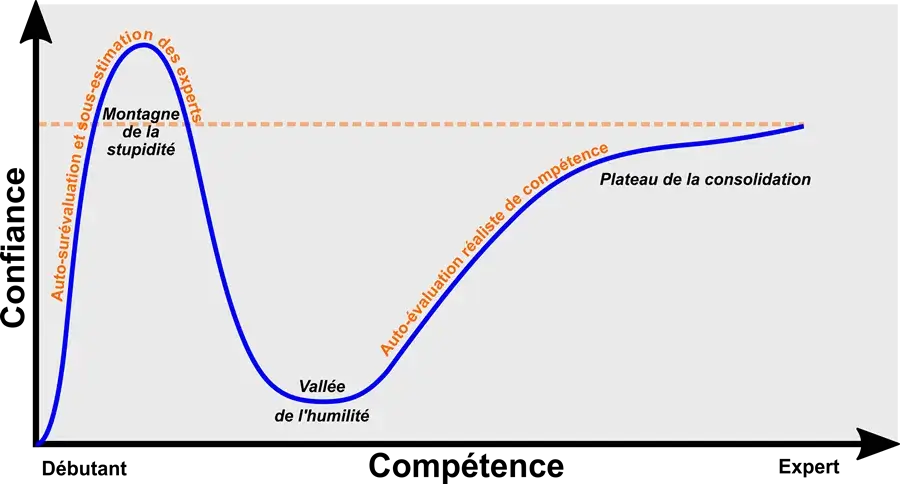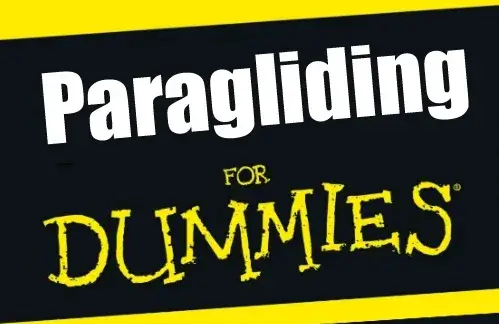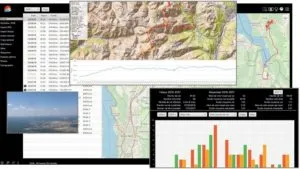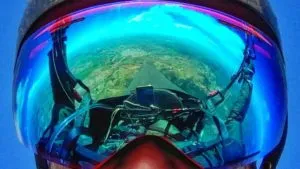Last update : 27/03/2022
Which paraglider to start with ?
How long does it take to learn paragliding ?
Where to learn paragliding ? These are the questions that are often asked. Here is the beginning of an answer.
More than 20 years ago, I had my first paragliding course. I thought that it was a bit of an underground activity, like base-jumping, or exploring the Parisian catacombs, that there was no really certified training, and that you had to be initiated by a few pioneers, hoping to find the right ones. Fortunately, the Internet already existed, and I quickly found a school. The irony is that I became a paragliding instructor, and I now teach the activity.
So here are some tips on how to get started with paragliding:
Discover paragliding with a tandem flight
Table of contents
It is not mandatory, but it will take away a big part of the unknown, and therefore of the stress. Book a tandem flight with one of the many paragliding schools offering tandem flights.
After a short briefing with your instructor, and before you even think about it, you are already in the air. This will be your first paragliding lesson. Without a doubt, if weather conditions allow it, your instructor will give you the controls.
You will then know if the activity is for you ( or not). You will realize that the activity is not dangerous if it is practiced as it should. I never tire of seeing passengers full of apprehension before their first tandem flight, with stars in their eyes when they land, or even during the flight, like Kelly, this winter in Mexico:
When they ask me, 'How long does it take to learn to fly,' I know they are interested and will probably learn to fly.
Registration for a beginner's paragliding course
One of my colleagues calls this type of training course: Discovery of the activity, because at the end of a 5-day course, you will have carried out some flights but only under your instructors' supervision and in smooth conditions.
In short, you are not really an independent pilot. At this stage, each flight will seem like an achievement, yet it lasted only a few minutes.
Even if your professional and family life do not allow you to continue to train in paragliding, it will remain an unforgettable experience: In 20 years from now, you will remember this first flight.
Here is the list of schools offering paragliding courses, including "les Grands Espaces", featured in the video hereunder. If you're an English speaker, it's likely you'll end up with me. ?
If you learn in Mexico with us, or elsewhere in the world, APPI is becoming an international standard.
And guess what ? I am also a certified APPI intructor ! ?
You go on the training slope in the morning, to feel the lift, then you do a tandem flight with your instructor afterwards.
Paragliding intermediate training
Each pilot progresses at his own pace, with his strengths and weaknesses. But it will generally be necessary to go through a second course (intermediate) at the very least.
First of all, to confirm your autonomy during take-off and landing.
Then you will surely have to come back to learn about thermalling, which allows you to stay in the air and to climb in stronger conditions. But before you do that, you need to master active piloting.
Finally, cross country flights require more experience.
Some pilots return to school every year because they prefer to fly under supervision, with new (or recent) equipment. If you fly less than two weeks a year, it is probably better to favor this option, as it is cheaper than buying your equipment.
Others, at the end of this intermediate paragliding course, take the plunge and buy their paragliding gear (harness and glider) from paragliding shops. It is obvious that after a certain stage, if you are hooked, and if you don't have a flying site nearby, you can at least practice on the ground: ground-handling, which is undoubtedly one of the best way to hone your paragliding skills.
Join a paragliding club
You have your own paragliding gear, but just like supervised driving, it is not recommended to fly alone, at least at the beginning. Get your license from a paragliding club near your home, or at least near your favorite site.
Look at what each club offers, its dynamics. Often this choice is made by affinity: You already know some pilots in this club.
Be aware of your level: you are still a fledgling, and you will need to do many top-to-bottom (ballistic) flights, before considering to follow the more experienced friends. If there are other young pilots like you in the club, it is only better to leverage the group dynamic.
And if you are lucky enough to meet some more experienced paragliding pilots to help you progress in safety, it is a big advantage. Avoid discovering new sites alone. Go with someone who knows.
Determine which equipment is best for you
A misconception, often observed out of pretense or pride, is that a school wing (EN-A) is made for learning, and that one can reasonably "save time" by switching to an En-B (intermediate wing) for a first purchase.
First of all, your learning is far from over after one or two training courses and today's A wings will allow you to progress in safety, and have performances similar or superior to those of competitions' of 15 or 20 years ago, with the added safety.
Paragliding is an activity that takes time to mature, like a good wine. Fly responsibly! Ask your instructor for advice because we are all different, and the school where you learned surely offers demo wings. And it is important to try before you buy!
For more information, Make sure you read our paraglider buying guide.
Don't make the mistake of learning the wrong way
We now live in a world where a hobbyist's blog or a YouTube video is considered more knowledgeable than a teacher, or in this case, a paragliding instructor. You can try to learn paragliding on your own, but it may significantly decrease your life expectancy.
At best, you'll make every flight with a lot of anxiety.
Up to you.
In many countries, it is compulsory to get a paragliding license, this is not the case in France, where we prefer to make the pilots responsible, and where free flight remains a space of freedom.
Don't overestimate your abilities
Once the first flights are over, your level of apprehension decreases and you feel invincible: The intermediate pilot syndrome.
This is the Dunning-Kruger effect: To put it simply, when you are a beginner, you overestimate your skills, you are too confident, and you are not (or no longer) aware of the risk. After a big scare, it is difficult to get back on track, as summarized in the following diagram:

Arjuna Filips , CC BY-SA 4.0
Always have a plan "B"
Paragliding is a "mental exercise", just like chess (the board game): It does not require great physical strength, but it can be mentally tiring. Important decisions are made during the flight.
You have to think ahead of time. And have a fallback plan if things don't go as planned. You don't play against an opponent, but with the air mass, which can fluctuate. For example, if I'm planning to reach the other side of the valley, I need to make sure that if it doesn't work out, I can at least find a place to land.
Conclusion
Paragliding is not a dangerous activity, but a risky one. It is safe if practiced reasonably: that is to say, if you have taken the time to learn or train your skills with a paragliding school.
It is important to have procedures (check-lists), to be aware of the limits of our aircraft, and the aerological hazards. If you have any questions about paragliding, you can debunk the activity by taking a beginner's course, or even by having a tandem flight as a first paragliding experience.
Paragliding is not something you learn in a week. When people ask me how long it takes to learn to fly, I say that after the third day you will be flying "on your own", but a friend of mine who is an instructor says that it takes more than a lifetime to learn to master the activity, and he is right, because you learn every day.
Sorry if you wanted to learn from a "for dummies" book, it doesn't exist yet, and it's better that way!




